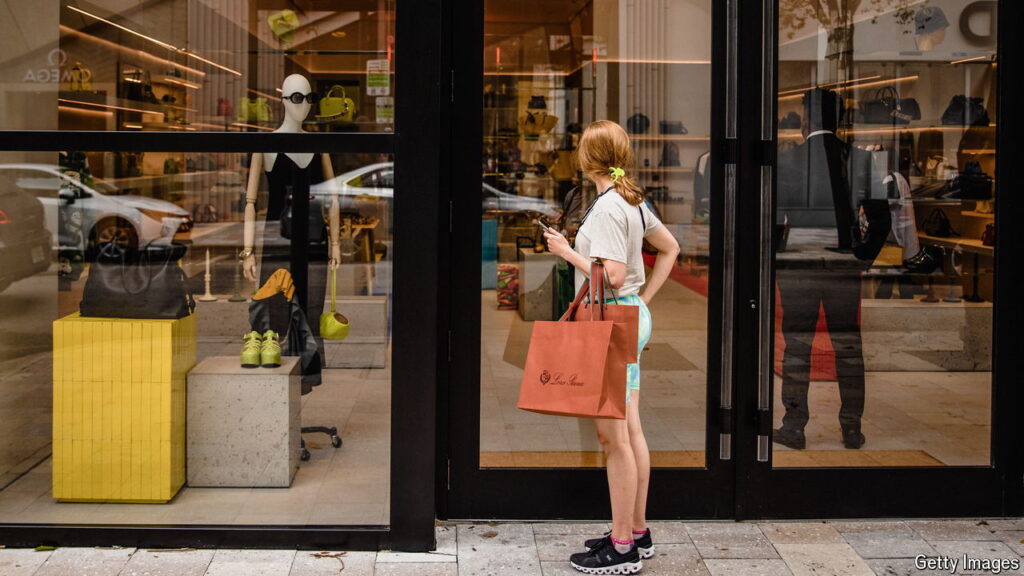American consumers have long been known for their resilience in the face of economic challenges. Despite the uncertainty brought about by the covid-19 pandemic, they initially redirected their savings towards home-exercise equipment. Now, however, it seems they are shifting their focus towards more leisurely pursuits, such as beachside vacations. Contrary to earlier predictions by bank executives, who feared that inflation would squeeze household budgets, American consumers have continued to spend, propelling the country’s GDP to new heights when compared to its G7 counterparts.
However, recent data suggests that this trend may be beginning to shift. In April, monthly consumer-spending growth slowed significantly, dropping from 0.7% to just 0.2%. When adjusted for inflation, overall spending actually decreased. Retail sales have also shown signs of weakening, with major companies like McDonald’s and 3M reporting a downturn in customer spending. The latest spending figures, released on May 31st, have led the Atlanta branch of the Federal Reserve to revise down its growth forecast for the country’s GDP in the second quarter to 1.8%.
This unexpected dip in consumer spending raises concerns about the future trajectory of the American economy. For months, economists and analysts have been closely monitoring consumer behavior, as it plays a crucial role in driving economic growth. The sudden slowdown in spending suggests that American households may be starting to feel the pinch of rising inflation and other economic pressures.
One possible explanation for this shift in consumer behavior is the lingering impact of the covid-19 pandemic. While many Americans have been eager to resume their pre-pandemic activities, the economic fallout from the crisis continues to loom large. Rising prices for essential goods and services, coupled with ongoing supply chain disruptions, have put a strain on household budgets, making consumers more cautious about their spending.
In addition to these external factors, there are also internal dynamics at play. The labor market, for example, has been slow to recover from the pandemic-induced downturn, leading to persistent job losses and wage stagnation in certain sectors. This has undoubtedly contributed to the overall sense of economic uncertainty, causing consumers to rethink their spending habits and prioritize essential purchases over discretionary expenses.
Looking ahead, it remains to be seen whether this dip in consumer spending is a temporary blip or a more long-lasting trend. The Federal Reserve and other economic policymakers will be closely monitoring the situation, ready to take action if necessary to support the economy. In the meantime, American consumers may need to adjust their expectations and budgeting strategies in response to the changing economic landscape. While the future may be uncertain, one thing is clear: American consumers have proven time and time again their resilience and willingness to adapt in the face of adversity.












